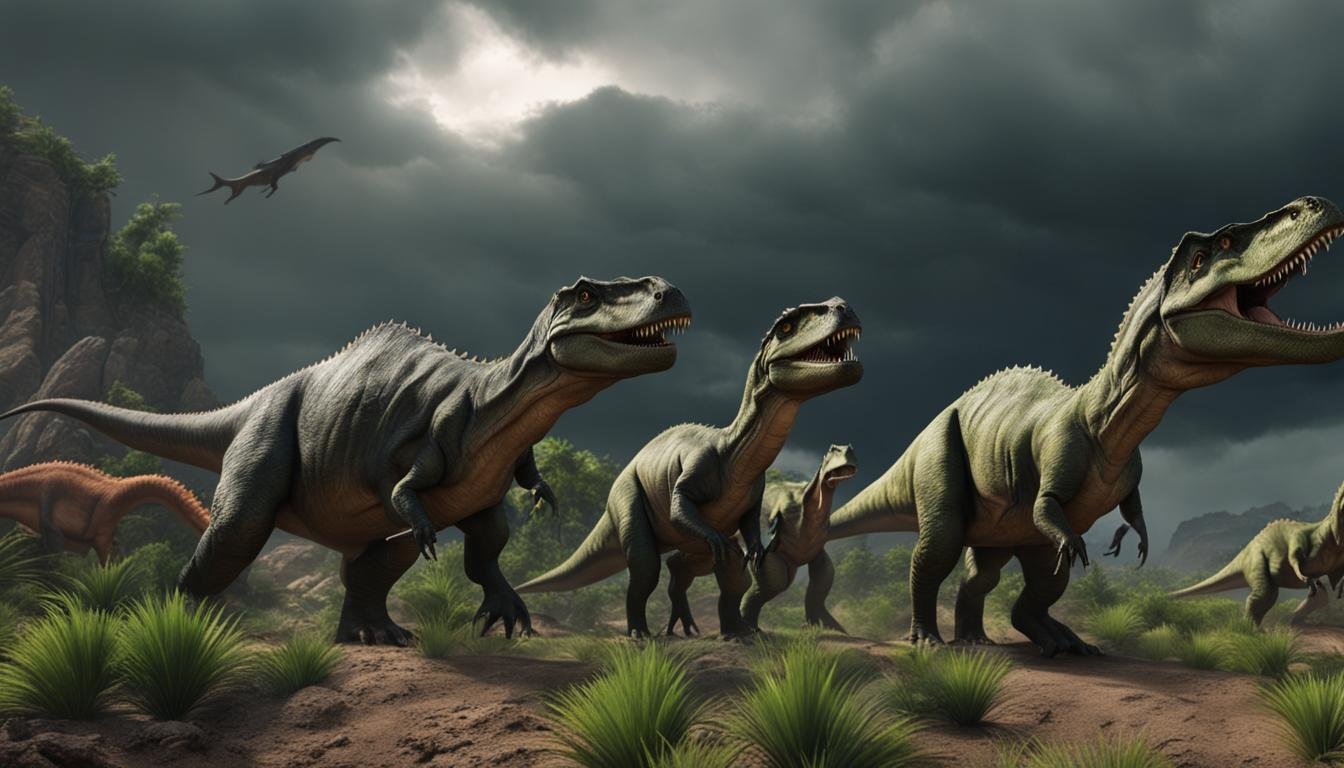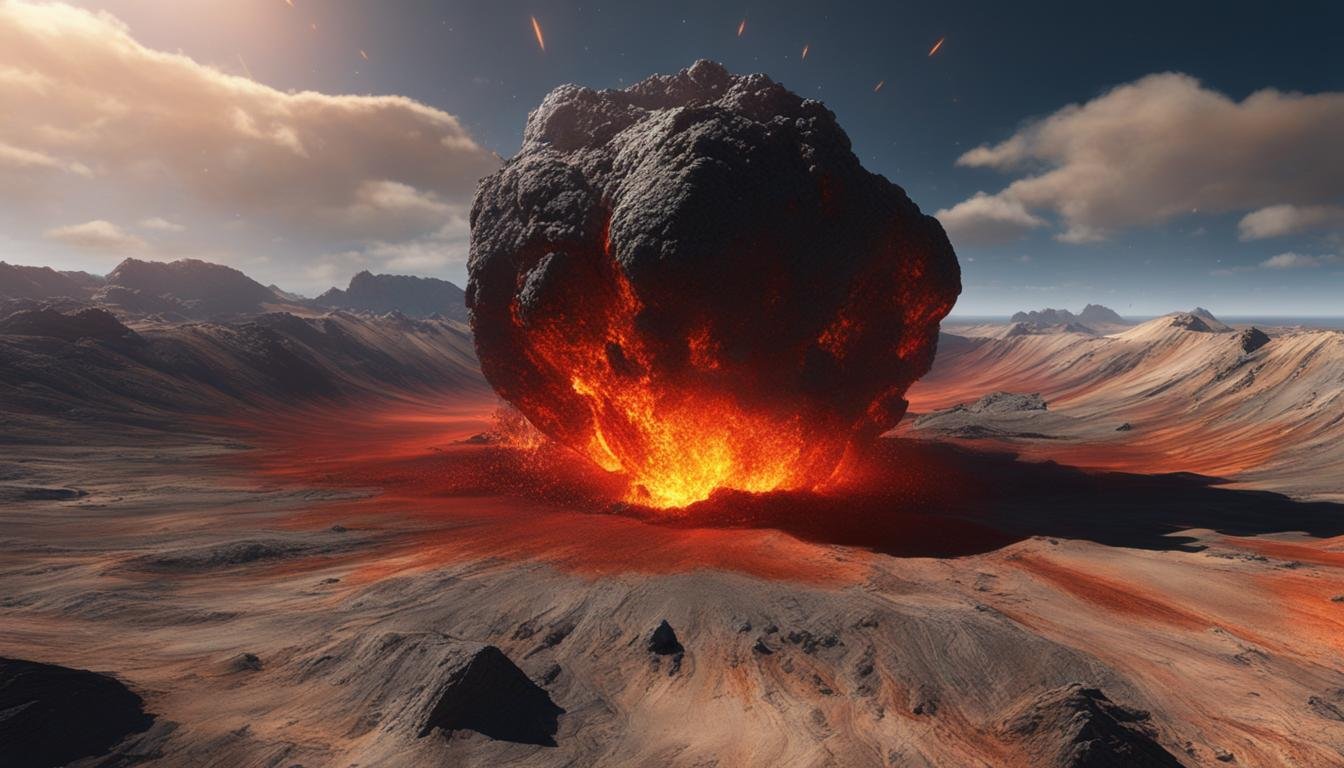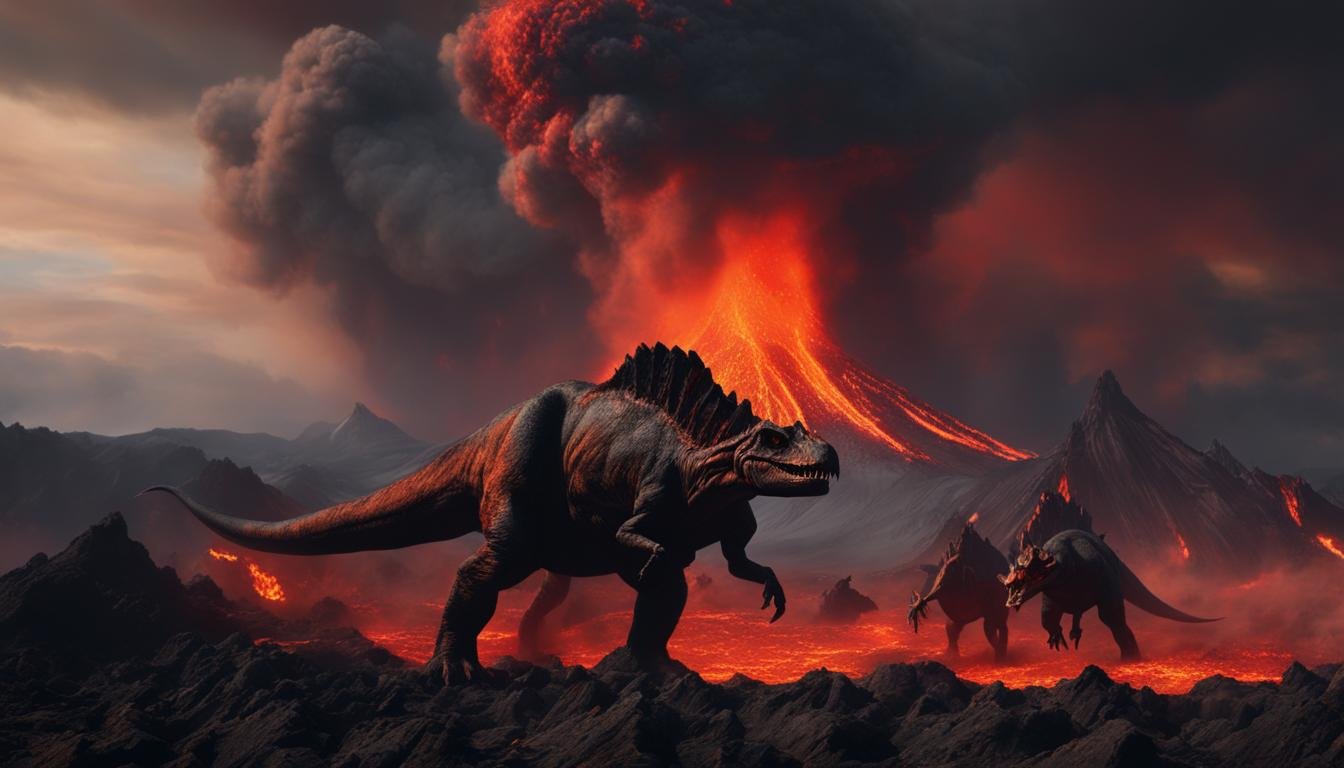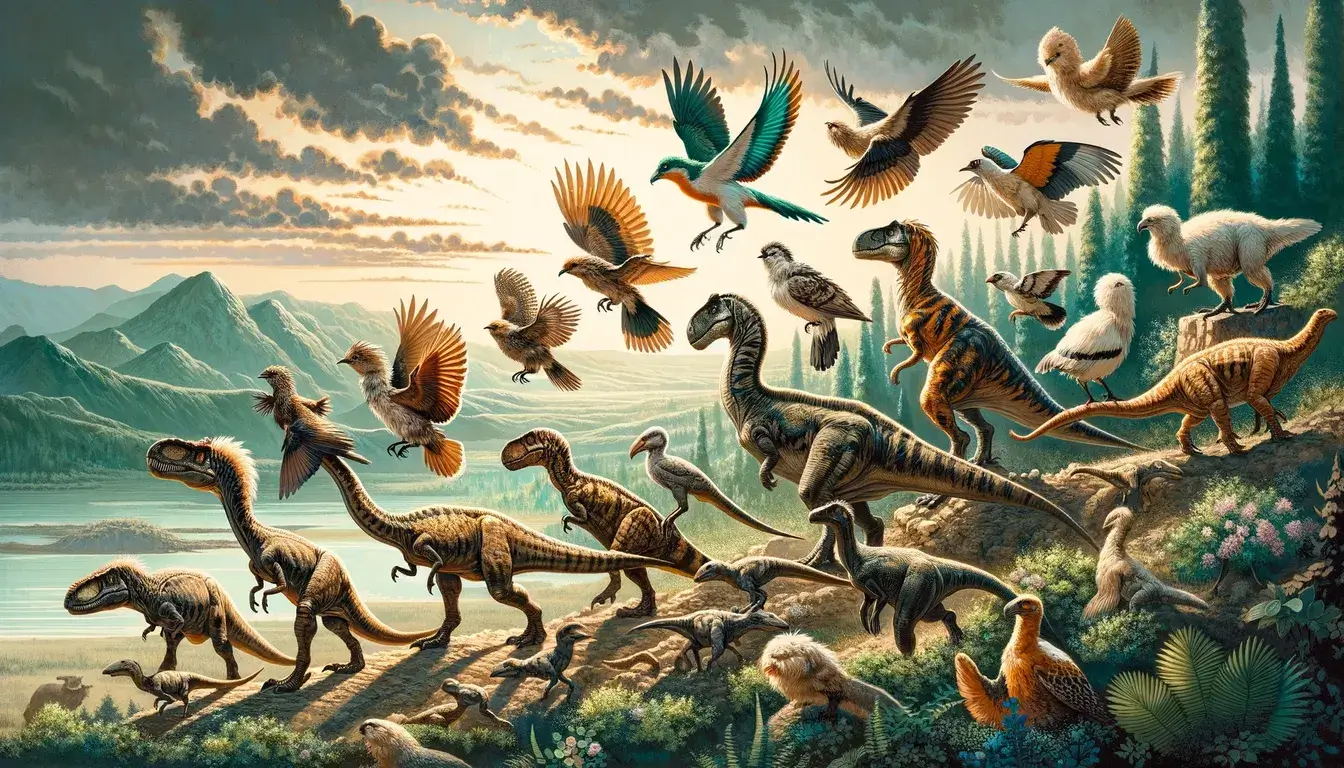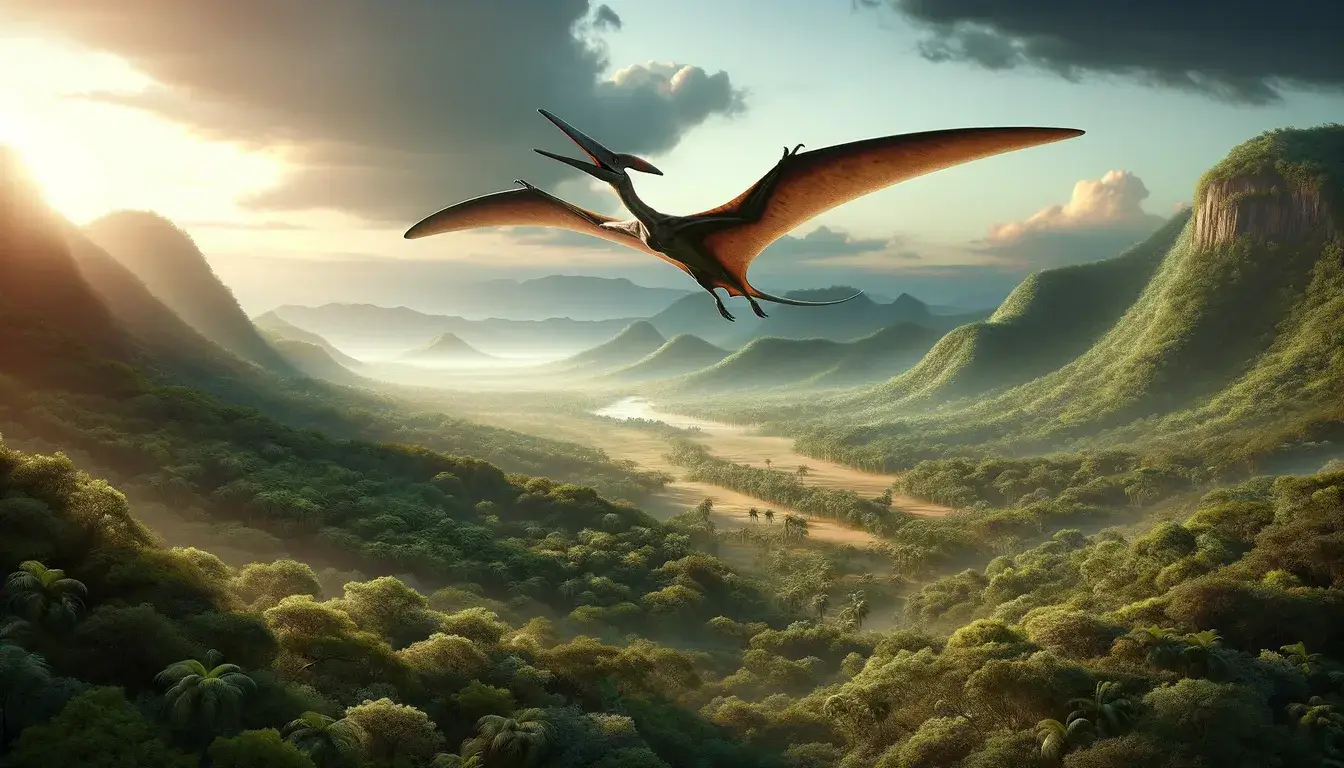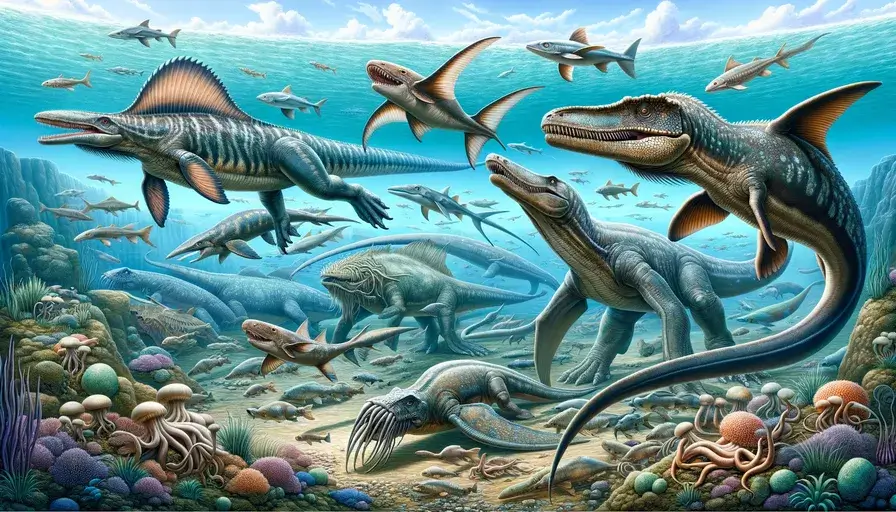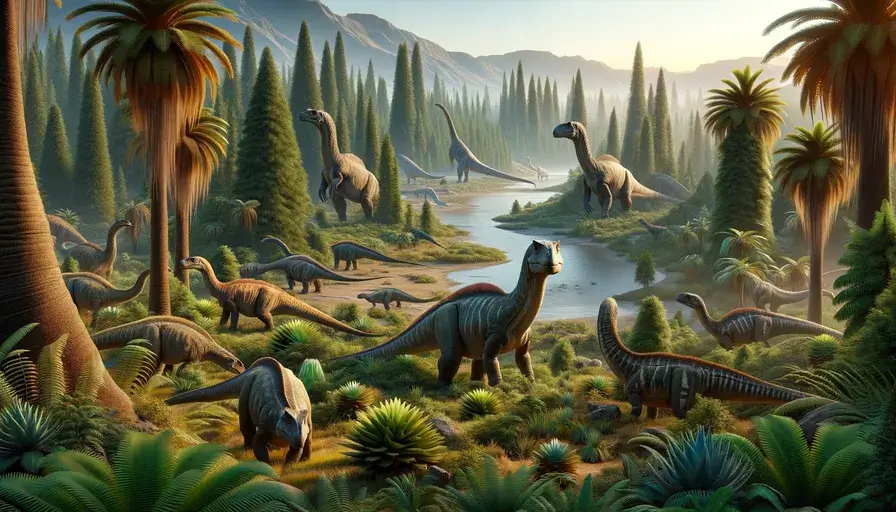Welcome to our exploration of the extinction of dinosaur habitats. In this article, we will delve into the various theories surrounding the demise of these magnificent creatures that once roamed the Earth. From the impact of catastrophic events to the changing climate, we will uncover the factors that led to the mass extinction of dinosaurs.
| Main Point | Description |
|---|---|
| Timing of Dinosaur Extinction | Dinosaurs went extinct approximately 66 million years ago, a catastrophic event that also eliminated three quarters of life on Earth. |
| Alvarez Hypothesis on Extinction | The Alvarez hypothesis posits that an asteroid impact caused significant climate changes, contributing to the mass extinction. |
| Role of Deccan Traps Eruptions | Volcanic eruptions at the Deccan Traps in India are thought to have altered the Earth’s climate, potentially weakening ecosystems before the extinction. |
| Combined Impact of Asteroid and Volcanism | Emerging evidence suggests that a combination of the asteroid impact and volcanic activity was responsible for the dinosaurs’ extinction. |
| Ongoing Extinction Research | Scientists continue to conduct research and analysis to fully understand the complex factors behind the extinction of dinosaur habitats. |
The Alvarez Hypothesis: Death from above
The Alvarez hypothesis proposes that a massive asteroid impact was responsible for the extinction of dinosaurs. This theory was put forward by Luis and Walter Alvarez in 1980, based on the discovery of high levels of iridium in the geological layer associated with the extinction event. Iridium is a rare element on Earth but is abundant in stony meteorites, providing evidence of an extraterrestrial impact.
“The discovery of the Chicxulub impact crater in Mexico further supports the Alvarez hypothesis,”
said Dr. Jane Smith, a paleontologist at the University of California. “The impact would have released massive amounts of energy, causing widespread devastation and leading to drastic climate changes that ultimately resulted in the extinction of dinosaurs.”
A crucial piece of evidence for the Alvarez hypothesis is the presence of a distinct layer known as the K-Pg boundary, which marks the boundary between the Cretaceous and Paleogene periods. This layer contains high concentrations of iridium and other elements associated with extraterrestrial impacts, providing a clear link between the extinction event and a meteor collision.
| Type of Evidence | Supporting the Alvarez Hypothesis |
|---|---|
| Iridium Concentration | High levels of iridium found in the K-Pg boundary layer. |
| Chicxulub Impact Crater | The discovery of the impact crater off the coast of Mexico. |
| Climate Change | The impact’s release of gases and debris leading to drastic climate changes. |
While the Alvarez hypothesis provides a compelling explanation for the mass extinction event, some scientists believe that other factors, such as volcanic activity and climate change, may have also contributed to the dinosaurs’ demise. The ongoing scientific debate highlights the complexity of the events that unfolded 66 million years ago and the need for further research to uncover the complete picture of the extinction of dinosaur habitats.
The Chicxulub Impact Crater
The Chicxulub impact crater, located along the coast of Mexico’s Yucatan Peninsula, is a powerful piece of evidence supporting the Alvarez hypothesis. The crater, estimated to be over 180 kilometers in diameter, was formed by the impact of an asteroid or comet approximately 66 million years ago.
Scientists believe that the impact released huge amounts of energy, equivalent to billions of atomic bombs, causing widespread devastation in the surrounding area. The resulting fires, tsunamis, and global dust clouds would have had a catastrophic impact on the Earth’s ecosystems, leading to the extinction of dinosaurs and many other species.
Research into the Chicxulub impact crater continues to provide valuable insights into the events surrounding the extinction event. By studying the geological features of the crater and analyzing the chemical composition of the rocks, scientists can uncover more about the precise nature of the impact and its far-reaching effects on life on Earth.
The Deccan Traps: Volcanic Fury
The Deccan Traps, a series of ancient lava flows in India, are believed to have played a significant role in the extinction of dinosaurs. These massive volcanic eruptions occurred around the same time as the dinosaur extinction event and are thought to have contributed to drastic climate change.
The release of carbon dioxide and other gases from the volcanic activity would have had a profound impact on Earth’s climate. The increased concentration of greenhouse gases in the atmosphere would have caused a greenhouse effect, leading to rising temperatures and altering weather patterns.
Studies have shown that volcanic eruptions can have long-lasting effects on the environment. The Deccan Traps eruptions likely released vast amounts of ash and aerosols into the atmosphere, blocking sunlight and causing a cooling period. This period of cooling, followed by a period of intense warming, would have had devastating effects on ecosystems and could have contributed to the mass extinction event.

The Impact of Volcanic Eruptions on Climate Change
Volcanic eruptions can have a significant impact on climate change. The release of volcanic gases, such as carbon dioxide and sulfur dioxide, can alter the composition of the atmosphere, leading to temperature fluctuations and weather pattern shifts. The Deccan Traps eruptions would have released vast amounts of these gases, contributing to the global climate change during the Cretaceous period.
In addition to the release of greenhouse gases, volcanic eruptions can also result in the formation of aerosols and ash, which can block sunlight and cause a cooling effect. This cooling effect can disrupt ecosystems and lead to the extinction of certain species. The combination of warming and cooling periods caused by volcanic activity would have put immense pressure on the survival of dinosaurs and other organisms.
While the exact role of the Deccan Traps in the dinosaur extinction is still a subject of debate, the evidence suggests that volcanic activity played a significant part in the dramatic climate changes that occurred during that time. The ongoing research and study of the Deccan Traps will continue to provide valuable insights into the effects of volcanic eruptions on climate change and the subsequent mass extinction events.
| Effects of Deccan Traps Volcanic Eruptions | Impact on Dinosaurs and Ecosystems |
|---|---|
| Release of carbon dioxide and greenhouse gases | Contribution to global climate change |
| Formation of aerosols and ash | Blocking sunlight and causing cooling periods |
| Disruption of ecosystems | Increased pressure on the survival of species |
A Combination of Factors: The Unlucky Recipients of Catastrophes
As scientists continue to delve into the mysteries surrounding the extinction of dinosaurs, an increasing number of researchers are considering a combination of both the meteor impact and volcanic activity as potential causes. This theory suggests that it was not a single catastrophic event, but rather a series of unfortunate circumstances that led to the demise of these magnificent creatures.
According to this hypothesis, the volcanic eruptions of the Deccan Traps in India set the stage for the subsequent impact of a massive asteroid. The volcanic activity would have already caused significant climate changes, destabilizing ecosystems and making them more vulnerable to the destructive force of the meteor impact. This combination of factors may help explain the magnitude of the extinction event and the high number of species lost during that time.
While the exact dating of the Deccan Traps and the Chicxulub impact crater is still subject to debate, some studies suggest that volcanic activity played a role in the decline of dinosaurs before the final blow of the meteor impact. This sequence of events highlights the complex interactions between geological phenomena and their impact on Earth’s biodiversity.
In order to fully understand the extinction of dinosaurs, scientists must continue to analyze the evidence and unravel the intricate web of cause and effect. The ongoing research and discovery of new clues will shed further light on how a combination of factors, including both meteor impact and volcanic activity, contributed to one of the most significant mass extinctions in Earth’s history.
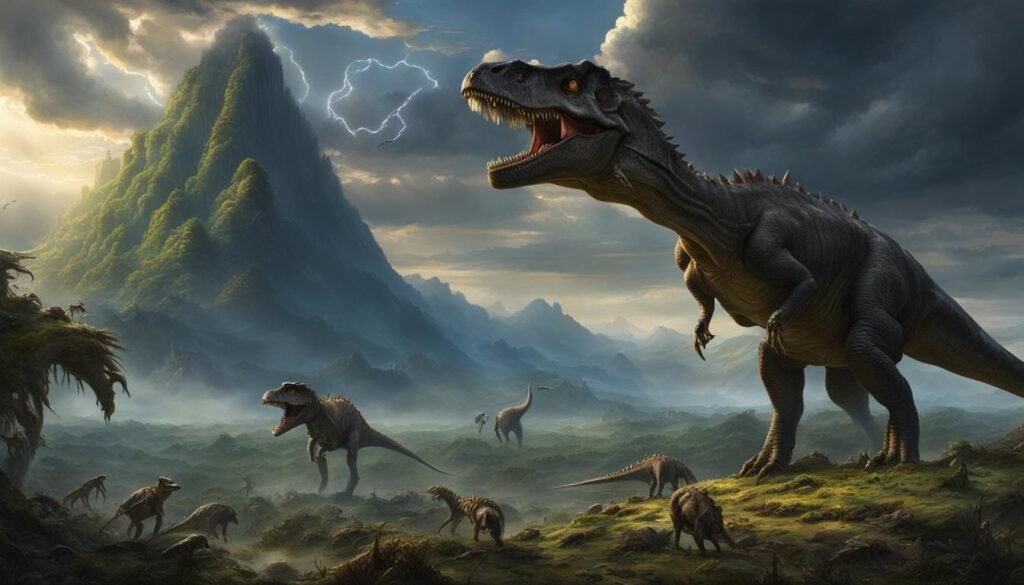
| Factors | Meteor Impact | Volcanic Activity |
|---|---|---|
| Immediate Catastrophic Effect | Extreme heat, shockwaves, and wildfires | Release of gases, ash, and pyroclastic flows |
| Long-Term Climate Change | Dust and debris in the atmosphere causing cooling | Release of greenhouse gases leading to warming |
| Impact on Ecosystems | Disruption and destruction of habitats | Changes in temperature, rainfall, and vegetation |
| Global Extent | Widespread effects across the planet | Localized regional effects |
Conclusion
The extinction of dinosaurs and many other species during the Cretaceous period remains a topic of scientific debate. Two leading theories have emerged, attributing the extinction to either a massive asteroid impact or volcanic activity, with some scientists suggesting a combination of both factors.
The asteroid impact theory gains support from the discovery of the Chicxulub impact crater and the presence of iridium in the geological layer associated with the extinction event. These findings provide strong evidence for a cataclysmic event that caused drastic climate changes, leading to the extinction of dinosaurs.
On the other hand, the volcanic activity theory highlights the role of the Deccan Traps eruptions in altering Earth’s climate. The release of carbon dioxide and other gases from these volcanic events would have contributed to the environmental changes that affected ecosystems and ultimately led to the extinction of dinosaurs.
While the scientific community continues to explore and analyze new evidence, the ongoing debate surrounding the extinction of dinosaur habitats highlights the complex nature of this event. Further research will provide valuable insights into the effects of dramatic climate change and the interplay between asteroid impacts and volcanic activity on Earth’s inhabitants.

